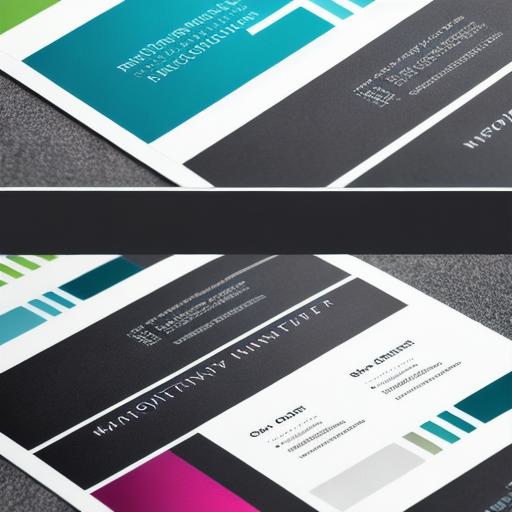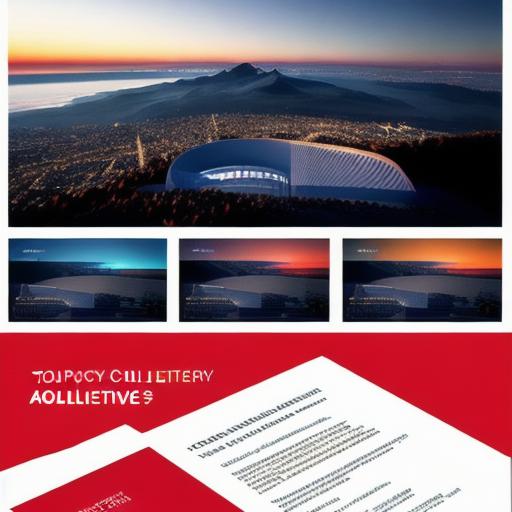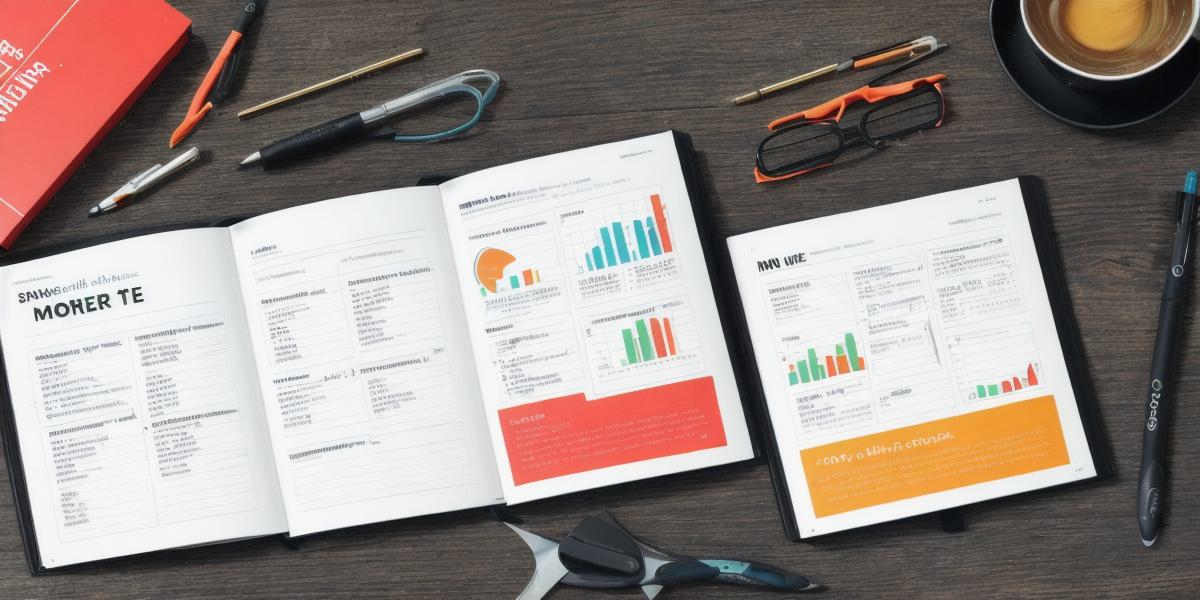As businesses grow and expand, they often find themselves overwhelmed by the sheer volume of information and resources they need to communicate their brand message effectively. This is where marketing collateral comes in. Marketing collateral refers to any materials or tools used to promote a product or service. These materials can range from brochures and flyers to websites and social media posts, and are designed to be reused across multiple channels and touchpoints. In this article, we will explore the benefits of marketing collateral and how it can help your business succeed in today’s competitive marketplace.
Understanding Marketing Collateral
Marketing collateral is a broad term that encompasses any materials or tools used to promote a product or service. These materials can be physical or digital, and are often designed to be reused across multiple channels and touchpoints. Some examples of marketing collateral include:
- Brochures and flyers
- Websites and landing pages
- Social media posts and ads
- Email campaigns
- Videos and animations
- Case studies and testimonials
- Presentations and slide decks
- Infographics and charts
- Trade show displays and booths
- Direct mail and promotional items
The primary goal of marketing collateral is to help businesses communicate their brand message effectively, while also providing potential customers with the information they need to make informed purchasing decisions. By using consistent and compelling messaging across multiple channels and touchpoints, businesses can build trust and credibility with their target audience, ultimately leading to increased sales and revenue.
Benefits of Marketing Collateral
Marketing collateral offers a number of benefits that can help businesses succeed in today’s competitive marketplace. Here are just a few examples:
Consistency and Branding

One of the key benefits of marketing collateral is that it allows businesses to maintain consistency across all their marketing materials. By using the same logo, color scheme, and messaging across brochures, flyers, websites, and social media posts, businesses can create a cohesive brand identity that resonates with their target audience. This consistency helps to build trust and credibility with potential customers, making them more likely to choose the business over its competitors.
Cost Effective
Marketing collateral is often a cost-effective way for businesses to reach their target audience. For example, creating a brochure or flyer can be done in-house using free or low-cost software, while social media posts and ads can be created and shared across multiple channels with minimal financial investment. By repurposing marketing materials across different platforms and touchpoints, businesses can also save time and money on content creation.

Scalability
Marketing collateral is highly scalable, allowing businesses to quickly and easily adapt their messaging and materials to meet the changing needs of their target audience. For example, a business that launches a new product or service can create a brochure, flyer, and social media campaign all at once, and then easily modify these materials as needed to promote the product or service more effectively.
Targeted Messaging
Marketing collateral allows businesses to tailor their messaging and materials to specific audiences, helping them connect with potential customers on a deeper level. For example, a business that sells products to both consumers and other businesses can create different brochures and flyers that highlight the features and benefits of their products from each perspective.
Improved Engagement
Marketing collateral can also help businesses improve engagement with their target audience. By using eye-catching visuals, compelling copy, and interactive elements such as videos and animations, businesses can create marketing materials that are more likely to capture the attention of potential customers and encourage them to learn more about their products or services.
Increased ROI
Ultimately, the benefits of marketing collateral can help businesses increase their return on investment (ROI). By creating high-quality marketing materials that resonate with their target audience, businesses can attract more leads and convert more sales, ultimately leading to increased revenue and profitability.
Case Studies: Real-Life Examples of Marketing Collateral Success
To help illustrate the benefits of marketing collateral, let’s take a look at some real-life examples from successful businesses in various industries.
Example 1: Coca-Cola’s "Share a Coke" Campaign
Coca-Cola’s "Share a Coke" campaign is a great example of how marketing collateral can be used to create a memorable and engaging brand experience for consumers. The campaign involved printing popular names and phrases on Coke bottles, encouraging consumers to find their own name or favorite phrase and share it with friends and family.
The result was a massive increase in sales for Coca-Cola, as well as increased engagement and brand loyalty among consumers. The campaign also helped to create a sense of community and connection around the Coke brand, making it more appealing to potential customers who were looking for ways to connect with friends and loved ones.
Example 2: Airbnb’s "Experiences" Campaign
Airbnb’s "Experiences" campaign is another great example of how marketing collateral can be used to create a unique and memorable brand experience for consumers. The campaign involved creating a range of experiences that were curated by local hosts around the world, from cooking classes to wine tastings to outdoor adventures.
The result was increased bookings for Airbnb, as well as a stronger connection between consumers and the brand. By offering unique and personalized experiences, Airbnb was able to differentiate itself from competitors and create a sense of exclusivity and luxury around its brand.
Example 3: Nike’s "Just Do It" Campaign
Nike’s "Just Do It" campaign is an iconic example of how marketing collateral can be used to create a powerful and memorable brand message that resonates with consumers across generations. The campaign involved creating simple, yet impactful ads and slogans that encouraged people to take action and pursue their goals, regardless of obstacles or challenges.
The result was increased sales for Nike, as well as a stronger connection between the brand and its target audience. By creating a powerful and inspiring brand message, Nike was able to motivate consumers to take action and achieve their dreams, making it more likely that they would choose Nike products over competitors.
Marketing Collateral Best Practices
Now that we’ve seen some real-life examples of how marketing collateral can be used effectively to promote a product or service, let’s take a look at some best practices for creating and using marketing collateral.
Know Your Audience
Before you start creating marketing collateral, it’s important to know who your target audience is and what they need from your brand. By understanding the demographics, interests, and pain points of your target audience, you can create messaging and materials that resonate with them and provide them with the information they need to make informed purchasing decisions.
Use Consistent Messaging Across All Materials
Consistency is key when it comes to marketing collateral. By using the same logo, color scheme, and messaging across all your marketing materials, you can create a cohesive brand identity that resonates with your target audience. This consistency helps to build trust and credibility with potential customers, making them more likely to choose your brand over competitors.
Use Visual Elements to Enhance Your Messaging
Visual elements such as images, videos, and animations can be powerful tools for enhancing your messaging and creating a memorable brand experience for consumers. By using eye-catching visuals that are relevant to your target audience, you can capture their attention and encourage them to learn more about your products or services.
Test and Optimize Your Marketing Collateral
Finally, it’s important to test and optimize your marketing collateral regularly to ensure that it is effective in reaching and engaging your target audience. By tracking metrics such as engagement rates, conversion rates, and ROI, you can identify areas for improvement and make changes to your messaging and materials to better meet the needs of your target audience.
Conclusion: The Importance of Marketing Collateral in Promoting Products or Services
In conclusion, marketing collateral is an essential tool for promoting products or services and connecting with potential customers. By creating high-quality messaging and materials that resonate with your target audience, you can increase brand awareness, generate leads, and ultimately drive sales and revenue growth. So whether you’re a small business owner or a marketing professional working for a large corporation, make sure to invest time and resources in creating effective marketing collateral that helps you achieve your business goals.




